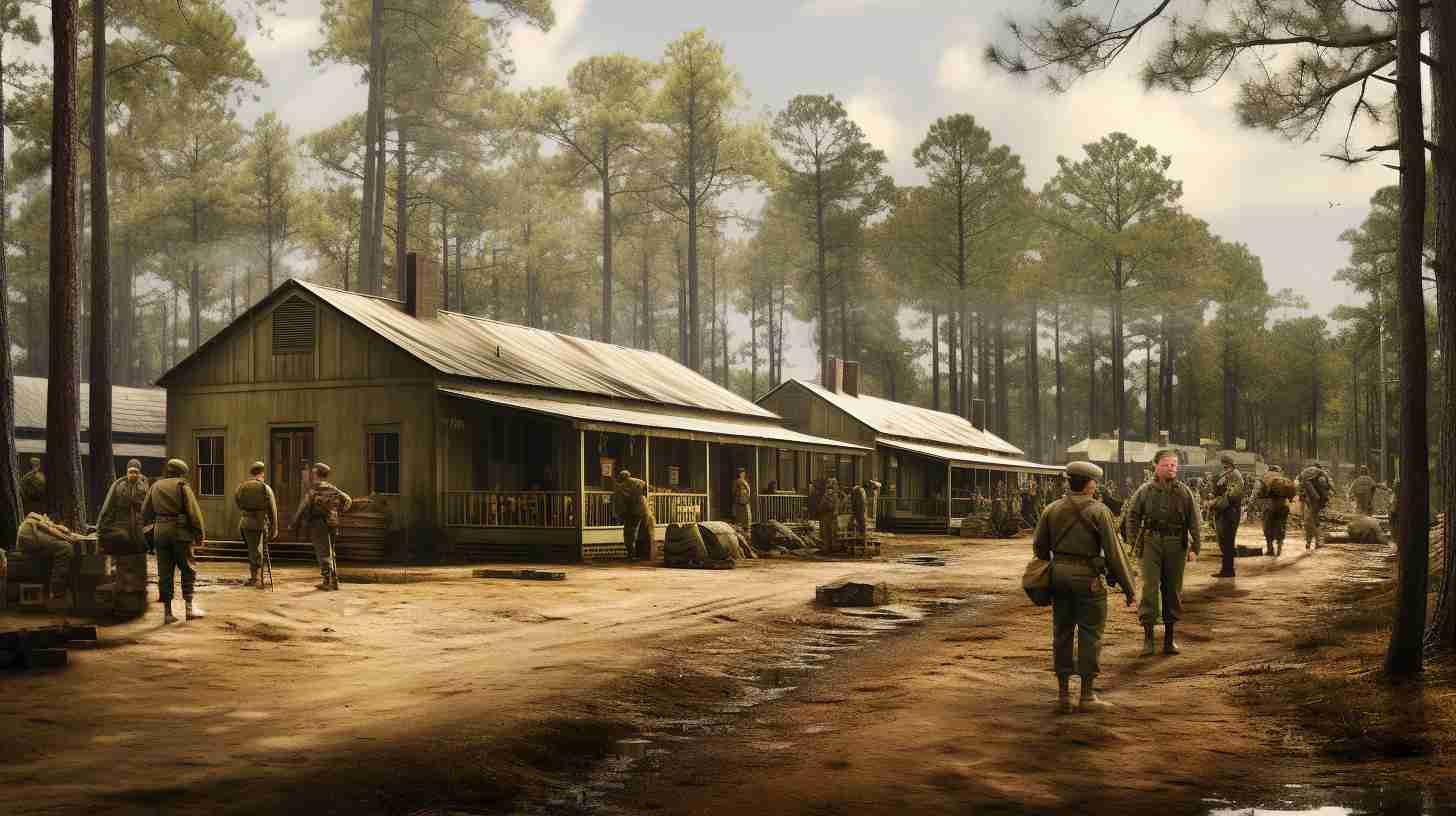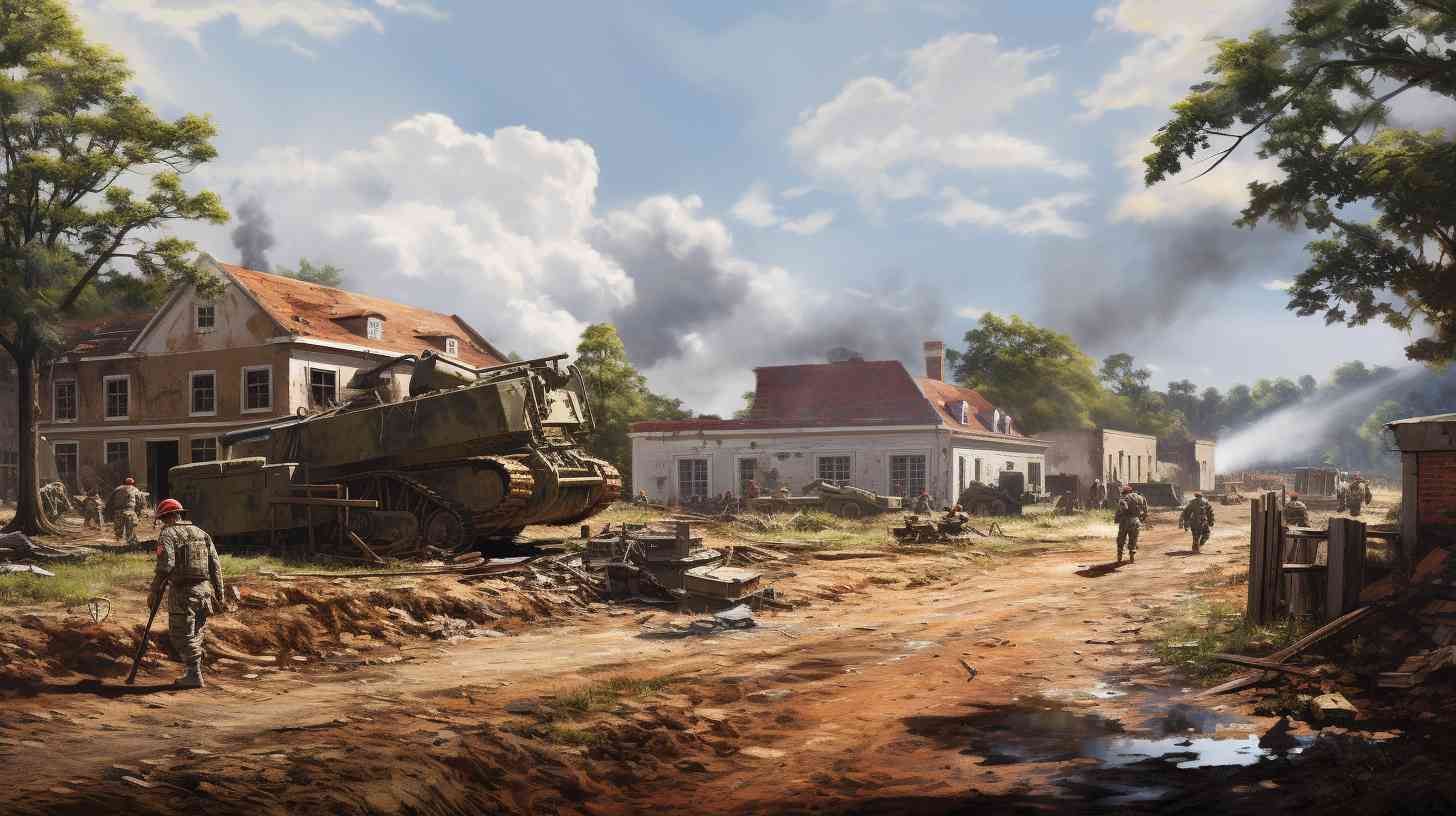
How Old Is Camp Lejeune

Do you ever wonder just how old Camp Lejeune really is? Well, buckle up because we’re about to take you on a historical journey through time.
From its humble beginnings in the early 1940s to its current importance as one of the largest Marine Corps bases, Camp Lejeune has seen it all. Discover the fascinating story behind the birth and growth of this iconic military installation.
Get ready to be amazed by the rich history that makes Camp Lejeune what it is today.
Key Takeaways
- Camp Lejeune was established in 1941 as a training facility during World War II.
- Native American tribes inhabited the area before European settlers, and their influence is important in understanding Camp Lejeune’s history.
- Camp Lejeune experienced significant growth in facilities, barracks, and infrastructure over the years and is now one of the largest Marine Corps bases.
- The establishment and growth of Camp Lejeune had a significant impact on the local economy, leading to job creation, business development, and the transformation of the region into a thriving hub of economic activity.
Early Beginnings
Camp Lejeune’s early beginnings can be traced back to its establishment in 1941. However, the history of this land goes beyond that.
Before the arrival of European settlers, the area now known as Camp Lejeune was inhabited by Native American tribes. The early settlers who arrived in the 18th century encountered various tribes, such as the Algonquian-speaking tribes and the Tuscarora.
These Native American tribes had a significant influence on the region, shaping its culture and history. Their presence can still be felt today through archaeological sites and artifacts that have been discovered in the area.
The Native American influence on Camp Lejeune’s early beginnings is an important aspect to consider when examining the history of this military base.
Establishment and Expansion
After its establishment in 1941, Camp Lejeune continued to expand and evolve into a prominent military base.
The establishment history of Camp Lejeune traces back to the early months of World War II when the United States Marine Corps sought to establish a training facility on the East Coast. The base was initially built to accommodate around 20,000 Marines and was named after Lieutenant General John Archer Lejeune, the 13th Commandant of the Marine Corps.
Over the years, Camp Lejeune experienced significant military base growth, with new facilities, barracks, training areas, and infrastructure being added to support the increasing number of Marines stationed there.
Today, Camp Lejeune remains one of the largest Marine Corps bases, playing a vital role in training and readiness for the Marines.
World War II Impact

During World War II, you’d have witnessed a significant impact on Camp Lejeune as it rapidly expanded to accommodate the growing number of Marines. The aftermath of World War II brought about several changes to the military infrastructure at Camp Lejeune.
Here are three items that highlight the emotional response to these changes:
-
Devastation: The war left behind a trail of destruction, with buildings and facilities damaged or destroyed.
-
Reconstruction: Efforts were made to rebuild and restore the camp, aiming to provide a suitable environment for the returning Marines.
-
Expansion: In response to the increased demand for military training facilities, Camp Lejeune underwent significant expansion, with new barracks, training areas, and support facilities being constructed.
The impact of World War II on Camp Lejeune was both profound and transformative, reflecting the enduring resilience and adaptability of the Marine Corps.
Post-War Development
As the military infrastructure at Camp Lejeune was rebuilt and expanded in response to the aftermath of World War II, significant developments took place.
The post-war redevelopment of Camp Lejeune played a crucial role in the economic growth of the region. The military base saw a surge in construction activities, with new barracks, training facilities, and administrative buildings being erected. This not only provided employment opportunities for the local population but also boosted the economy through increased spending on goods and services.
The expansion of Camp Lejeune also led to the establishment of new businesses and industries in the surrounding areas, further contributing to the economic growth.
The post-war development of Camp Lejeune transformed the region into a thriving hub, creating a lasting impact on the local economy.
Present-Day Significance

Now, let’s explore the present-day significance of Camp Lejeune and how it continues to play a vital role in the region’s economy and community.
-
Economic Growth: Camp Lejeune serves as a major economic driver in the area, contributing significantly to job creation and business development. The base employs thousands of military personnel, civilians, and contractors, stimulating the local economy through their spending power.
-
Environmental Contamination: The issue of environmental contamination at Camp Lejeune remains a significant concern. In the past, the base has faced challenges related to water contamination, leading to adverse health effects for residents and military personnel. Efforts are ongoing to address and mitigate this issue, ensuring the safety and well-being of the community.
-
Community Engagement: Camp Lejeune actively engages with the local community, fostering a spirit of collaboration and support. The base organizes various events, such as open houses and outreach programs, to strengthen ties between military personnel and civilians. This sense of unity and shared identity enhances the overall quality of life in the region.
Conclusion
In conclusion, Camp Lejeune has a rich history that began with its early beginnings and continued with its establishment and expansion. The impact of World War II played a significant role in shaping the camp, and its development continued post-war.
Today, Camp Lejeune holds great significance as a major Marine Corps base. But have you ever wondered how this historic camp continues to adapt and evolve to meet the needs of the modern military?
Disclaimer: Some information is provided through AI. Users should always conduct their own research and consult with qualified professionals before making any decisions.Affiliate information declaration: We may earn revenue from the products referred on this page and participate in affiliate programs.


